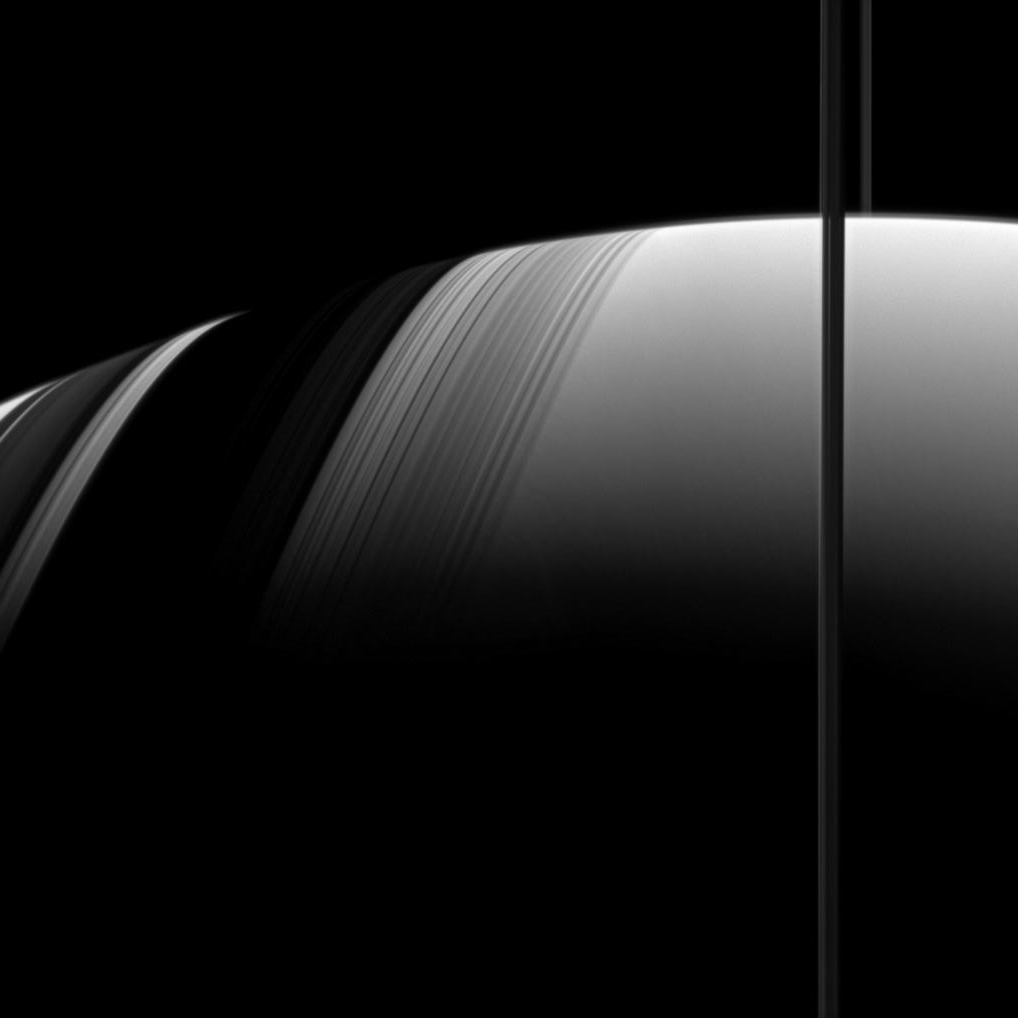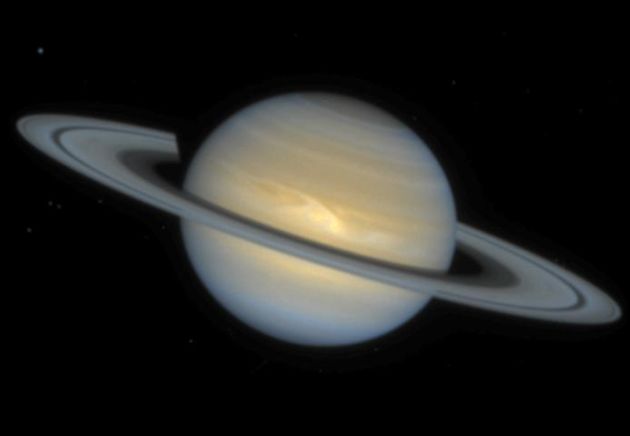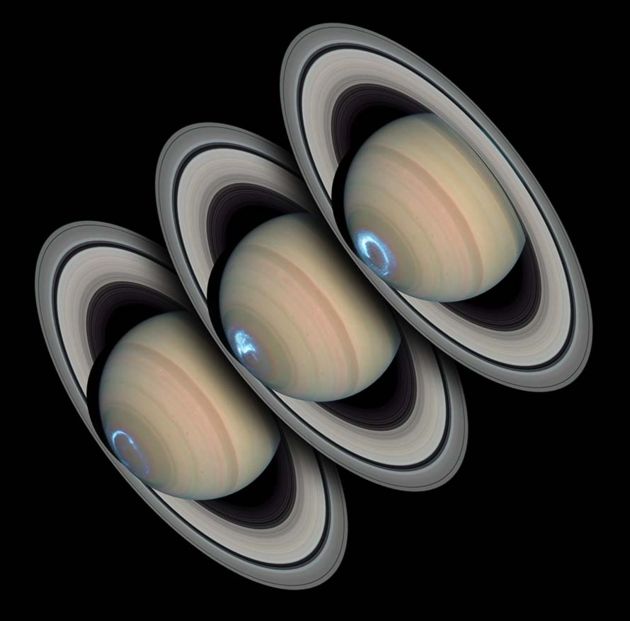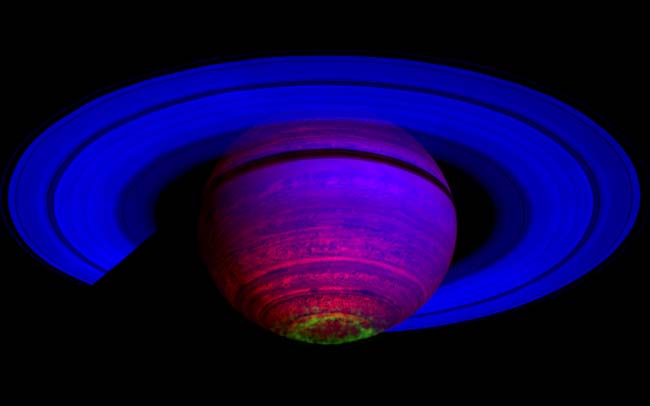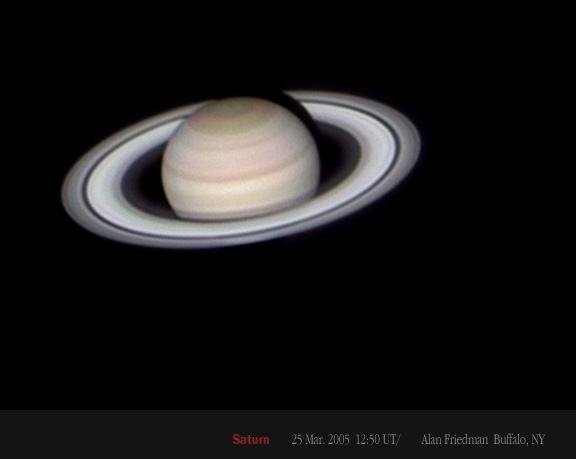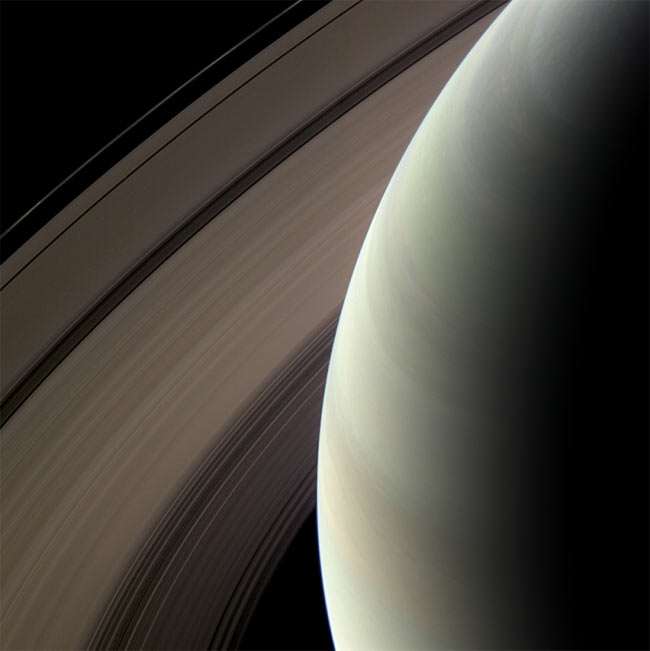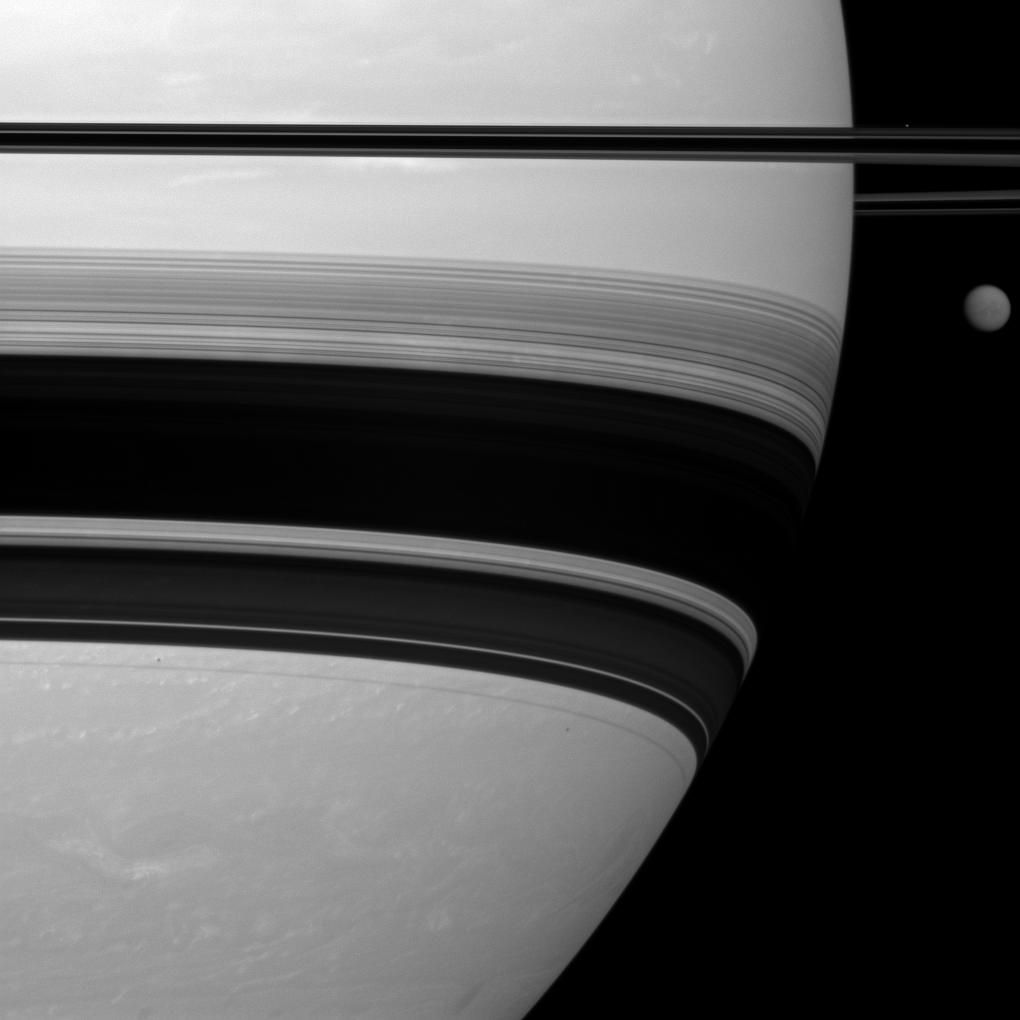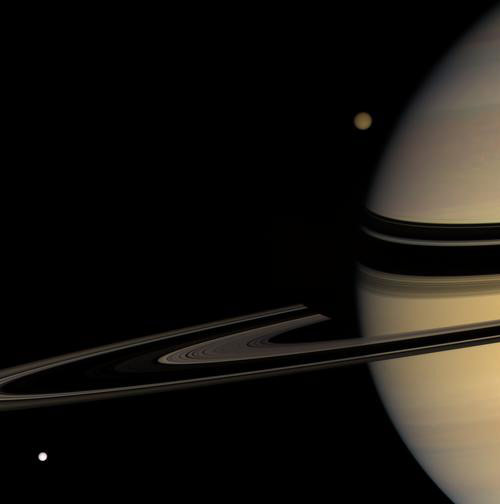Photos: Saturn's Glorious Rings Up Close
A View of Saturn's Southern Reaches
NASA's Cassini spacecraft snapped this angled shot of Saturn, showing the southern reaches of the planet with the rings on a dramatic diagonal. Saturn's icy moon Enceladus is visible as a tiny white speck in the lower lefthand corner. The picture was taken on June 15, 2012, at a distance of about 1.8 million miles. [Full Story]
Shadows of Saturn's Rings
Shadows of Saturn's rings (right) fall across the planet at left.
Inside the Giants: Puzzling Differences in Jupiter and Saturn
Saturn seems to have a significant core of iron, carbon and other elements
Bright Lights, Eerie 'Heartbeat' at Saturn
Hubble Space Telescope images of Saturn and its polar auroral emissions on Jan. 24, 26, and 28 in 2004. The images combine ultraviolet images of the south polar region with visible wavelength images of the planet and rings. Credit Z. Levay and J. Clarke.
Spectacular Aurora on Saturn Shines in New Video
Composite image of Saturn shows the entire planet, including the rings as seen by NASA's Cassini spacecraft from the south. The green glow represents aurora lights. Full Story.
Capture the Lord of the Rings
Saturn on 25 March 2005. Image by Alan Friedman.
Saturn Probe Beams Home Stunning Views
Saturn's northern hemisphere is seen here against its nested rings in this view from Cassini.
Breaking space news, the latest updates on rocket launches, skywatching events and more!
Cassini Photo of Saturn, Its Rings and Titan
In this photo, snapped by NASA's Cassini spacecraft on Jan. 5, 2012, Saturn's rings cast shadows on the huge planet. Saturn's largest moon, Titan, is visible just below the rings, in the upper right of the picture.
Moons on the Move
Titan emerges from behind Saturn while Tethys streaks into view in this colorful scene on March 24, 2008. Titan is 5,150 kilometers (3,200 miles) wide; Tethys is 1,071 kilometers (665 miles) wide. Saturn's shadow darkens the far arm of the rings near the planet's limb.
Saturn
Saturn and its rings.

Space.com is the premier source of space exploration, innovation and astronomy news, chronicling (and celebrating) humanity's ongoing expansion across the final frontier. Originally founded in 1999, Space.com is, and always has been, the passion of writers and editors who are space fans and also trained journalists. Our current news team consists of Editor-in-Chief Tariq Malik; Editor Hanneke Weitering, Senior Space Writer Mike Wall; Senior Writer Meghan Bartels; Senior Writer Chelsea Gohd, Senior Writer Tereza Pultarova and Staff Writer Alexander Cox, focusing on e-commerce. Senior Producer Steve Spaleta oversees our space videos, with Diana Whitcroft as our Social Media Editor.

